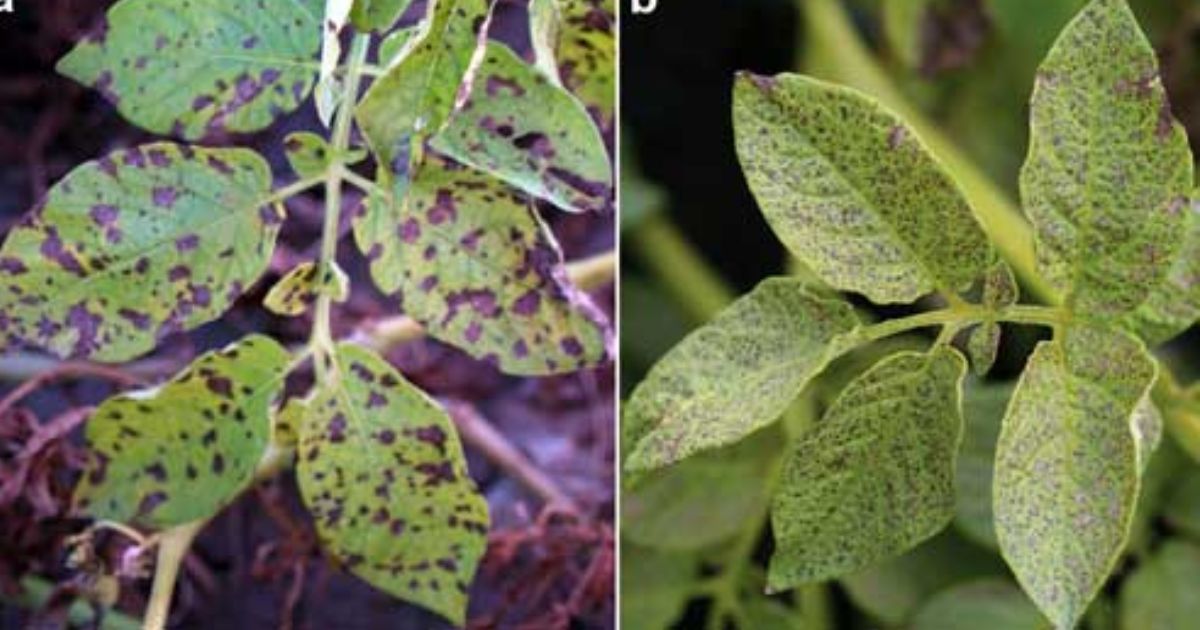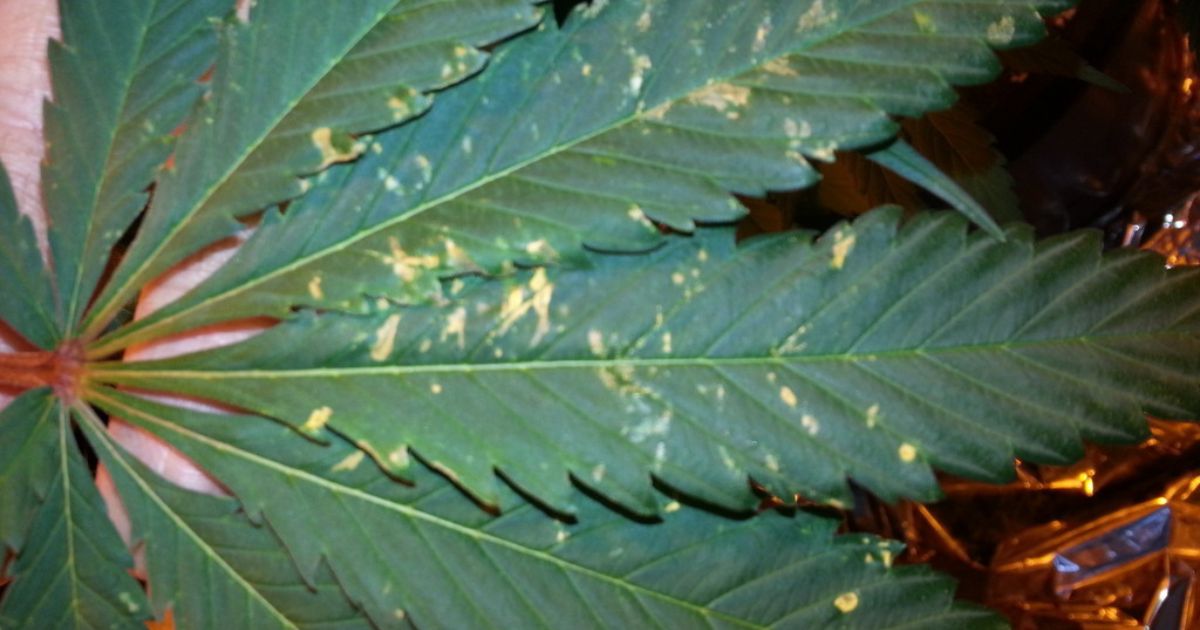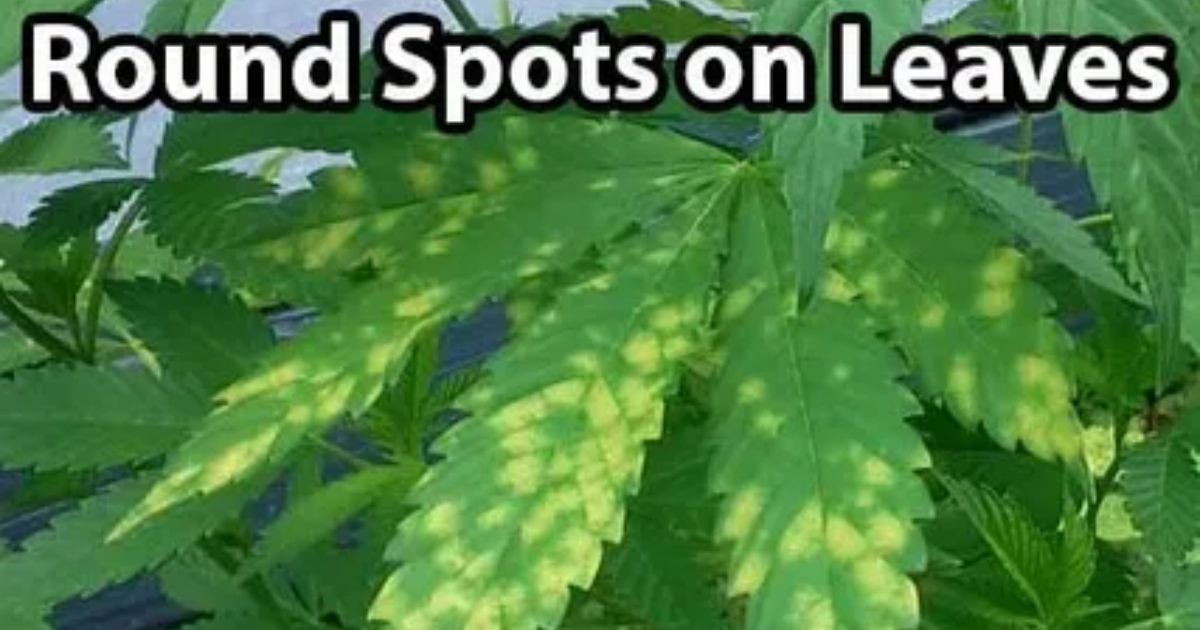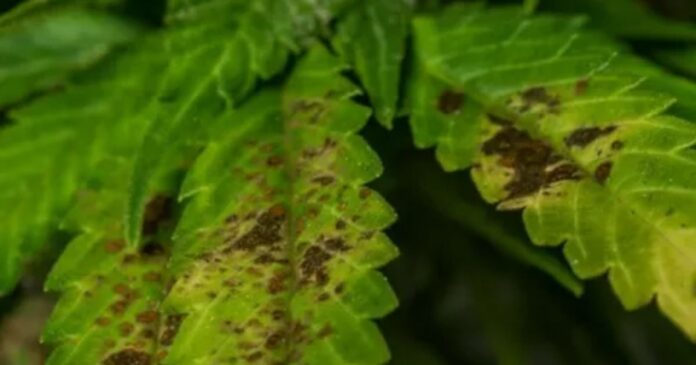If you’ve spotted brown patches or specks forming on your cannabis leaves, don’t panic, but don’t ignore them either. Brown spots are one of the most common warning signs that something’s off with your plant’s environment or nutrition. Whether you’re growing indoors or outdoors, these spots can indicate several problems, including nutrient deficiencies, pH imbalance, pests, or even light burn.
Healthy, vibrant green leaves are essential for photosynthesis, the process that fuels your plant’s growth and bud production. When brown spots appear, it means your plant is under stress and struggling to function properly. Ignoring the problem can lead to yellowing, curling, or even dying leaves, which ultimately impacts your yield and potency.
In this guide, we’ll dive deep into what causes brown spots on pot leaves, how to diagnose the exact problem, and what steps you can take to bring your cannabis plants back to perfect health. Whether you’re a beginner grower or an experienced cultivator, understanding these signs early can be the difference between a yield that thrives and a plant that struggles.
Understanding Brown Spots on Pot Leaves
Brown spots on cannabis leaves are more than just a cosmetic problem; they’re your plant’s way of telling you something is wrong. The size, shape, and color intensity of these patches can all vary. Often appearing as tiny freckles, rust-colored patches, or large brown areas spreading across the leaves.
In most cases, calcium deficiency brown spots on pot leaves indicate that the plant is facing nutritional, environmental, or biological stress. They can appear first on older fan leaves or on new growth, depending on the underlying issue. For instance, nutrient deficiencies often start at the bottom of the plant, while light burns or pest attacks may affect the upper or outer leaves.

It’s also important to note the pattern of the spots, whether they form around the leaf edges, between veins, How to Identify White Spots on Cannabis Plants or randomly across the surface. This detail can help pinpoint the root cause. For example:
- Brown edges usually point to nutrient burn or potassium deficiency.
- Rusty spots between veins can signal magnesium issues.
- Circular brown lesions may suggest fungal infections, such as leaf septoria.
When rust spots brown spots on pot leaves appear, photosynthesis efficiency drops, meaning your plant can’t convert light into energy as effectively. Over time, this weakens the overall structure, slows growth, and affects bud quality.By learning how to identify the type and pattern of leaf septoria brown spots on pot leaves early, you’ll be better equipped to take quick, effective action before the damage spreads.
Typical Reasons for Cannabis Leaf Brown Spots
Brown spots on cannabis leaves can stem from several issues, including nutrient problems, pests, and diseases. Understanding these root causes is key to saving your plant and preventing the damage from spreading.
Nutrient Deficiencies:
One of the most common culprits behind brown spots is a lack of essential nutrients. Calcium deficiency causes small, crispy brown patches on new growth, while magnesium deficiency leads to rusty spots between veins on older leaves. A potassium deficiency often burns the edges, leaving brown, scorched tips. Cannabis Leaf Pics : Types Benefits and Uses These deficiencies occur when your plant isn’t absorbing nutrients properly, usually due to poor soil balance or pH issues.
pH Imbalance:
Cannabis thrives in a slightly acidic environment. If the soil or water pH drifts too high or too low, the roots can’t absorb nutrients, even if they’re present, a condition known as “nutrient lockout.“ This often results in brown or bronze spots and overall leaf discoloration. Regularly testing and adjusting your pH levels (6.0–7.0 for soil, 5.5–6.5 for hydroponics) is crucial for healthy growth.
Overwatering or Underwatering:
Improper watering stresses the plant, reducing oxygen flow to the roots. Brown spots and root rot might result from overwatering. Underwatering causes leaf tips to dry and form crispy brown spots.
Light Burn:
When grow lights are placed too close, intense heat can scorch leaves, creating dry, brown patches. How to Identify White Spots on Cannabis Plants Adjusting the distance and intensity of the light prevents this problem.
Pests and Fungal Diseases:
Spider mites, thrips, and fungus gnats feed on leaf tissue, leaving small brown holes or specks. Similarly, fungal infections such as leaf septoria or rust fungus cause round, brown lesions. Regular inspection and proper humidity control help keep these threats at bay.
Identifying the correct cause ensures you can apply the proper fix before the problem worsens.
How to Diagnose the Exact Cause
Identifying the exact cause of brown spots on your cannabis leaves requires careful observation and a step-by-step approach. Since several issues can cause similar symptoms, you’ll need to examine your plant’s environment, feeding routine, and overall health before taking action. magiccann Here’s how to accurately diagnose what’s going wrong:
Inspect the Location of the Spots
Start by checking where the brown spots appear.
- Lower leaves usually indicate nutrient deficiencies (like magnesium or potassium).
- Upper leaves: Often point to light burn, heat stress, or pest infestations.
- Random spots across the plant: May suggest a pH imbalance or fungal infections.
Check pH Levels
Use a digital pH meter or test kit to measure both soil and water pH. Cannabis absorbs nutrients best at a slightly acidic range (6.0–7.0 for soil and 5.5–6.5 for hydroponics). If your readings fall outside these ranges, nutrient lockout could be the reason behind the brown spots.
Review Your Feeding Routine
Examine your nutrient schedule. If too much fertilizer is applied, the roots may burn and turn brown. Crispy patches, while too little leads to deficiencies. Ensure you’re using the proper nutrient ratios for your plant’s growth stage (vegetative or flowering).
Inspect for Pests and Diseases
Use a magnifying glass to look under the leaves and around stems. Tiny webs, bite marks, or moving dots are clear signs of pests like spider mites or thrips. Why Are My Weed Plants’ Leaves Turning Yellow Yellow halos or round lesions might indicate fungal infections.
Evaluate Light and Watering Conditions
If the leaves closest to the grow lights show damage, light burn, or heat stress, it’s likely. Also, check your watering habits: overwatering can cause root rot, while underwatering can lead to dry, spotted leaves.
By systematically analyzing these factors, you can pinpoint the exact cause of indoor plants brown spots on pot leaves and apply the proper treatment before the problem spreads.
Effective Solutions and Treatments
Once you’ve identified what’s causing the brown spots on your cannabis leaves, it’s time to act fast. Addressing the underlying cause is crucial. Not just treat the symptoms, so your plants can recover and resume healthy growth. Here’s how to fix each common issue effectively:
Correct Nutrient Deficiencies

- Calcium or Magnesium Deficiency: Add a Cal-Mag supplement to your feeding routine. This helps strengthen cell walls and prevent future leaf spotting.
- Potassium Deficiency: Use a balanced bloom nutrient mix or organic options like kelp meal or compost tea.
- Iron or Nitrogen Deficiency: Apply nutrient formulas rich in micronutrients, ensuring even coverage during feeding.
- Always start with small doses to avoid nutrient burn, charak neo tablet uses in hindi and flush your soil with clean, pH-balanced water if you suspect salt buildup.
Adjust pH Levels
If your pH is off, nutrients can’t be adequately absorbed.
- For low pH (too acidic), add dolomite lime or a pH-up solution.
- For high pH (too alkaline), use sulfur or a pH-down solution.
- Check both your soil and water regularly to maintain the ideal range (6.0–7.0 for soil, 5.5–6.5 for hydroponics).
Fix Watering Problems
Avoid watering too often; let the top inch of soil dry before watering again. If you’ve overwatered, improve drainage by adding perlite or coco coir. For underwatered plants, increase watering gradually to avoid shock.
Manage Light Stress
Raise your grow lights 12–24 inches above the canopy (depending on light type). Use light meters, if available, Common Mistakes That Stop Buds from Flowering to maintain a safe intensity and prevent heat buildup.
Control Pests and Fungal Infections
Spray natural remedies like neem oil, insecticidal soap, or diluted hydrogen peroxide to eliminate pests. For fungal issues such as leaf septoria or powdery mildew, prune affected leaves and apply organic fungicides, such as copper-based sprays. Keep humidity below 60% and ensure proper airflow to prevent recurrence.
By taking these targeted steps, you’ll not only remove rust spots on leaves during flowering but also strengthen your plant’s resilience against future stress, leading to greener, healthier, and more productive cannabis plants.
Prevention Tips for Healthy Pot Leaves
Preventing fan leaves turning yellow with brown spots are far easier than fixing them once they appear. With consistent care, a clean growing environment, and the right balance of nutrients, you can keep your cannabis plants vibrant, green, and thriving. Here are some practical prevention tips every grower should follow:
Maintain Proper pH Levels
Regularly test the pH of both your soil and water. A somewhat acidic atmosphere is ideal for cannabis growth. 6.0–7.0 for soil and 5.5–6.5 for hydroponics. Keeping pH in check ensures that nutrients remain available for absorption, preventing future deficiencies.
Follow a Balanced Feeding Schedule
Use high-quality cannabis nutrients suited for each growth stage (seedling, vegetative, and flowering). Overfeeding can cause nutrient burn, while underfeeding can lead to deficiencies, both of which can cause brown spots. Always begin with smaller dosages and work your way up. as your plants grow.
Water Correctly
Avoid overwatering or letting your soil completely dry out. Always begin with a lower dosage and work your way up. How to Roll a Perfect Blunt Wrap Every Time And make sure your pots have good drainage. This keeps roots healthy and prevents fungal growth or root rot.
Control Light and Temperature

Keep grow lights at an appropriate distance to prevent heat stress or light burn. Maintain optimal temperatures around 70–85°F (21–29°C) during the day and slightly cooler at night. Avoid sudden temperature swings.
Improve Airflow and Humidity
Good air circulation strengthens stems and prevents mold or mildew. Use oscillating fans and ensure proper ventilation. Keep humidity between 40–60%, depending on your plant’s growth stage.
Inspect Regularly for Pests and Diseases
Check your plants every few days, especially under the leaves, for signs of mites, thrips, or fungus. Early detection makes treatment easier and prevents damage from spreading.
Keep the Grow Area Clean
Remove dead leaves, disinfect tools, and avoid reusing contaminated soil. A clean environment drastically reduces the risk of fungal infections and pest infestations.
By following these preventive steps consistently, your cannabis plants will develop strong immunity, lush green foliage, and a better yield, all while staying free of those dreaded brown spots.
Conclusion
Brown spots on cannabis leaves may look alarming, but they’re actually your plant’s way of communicating that something isn’t quite right. Whether the cause is nutrient imbalance, pH issues, pests, or environmental stress, the good news is that most problems can be corrected with early detection and proper care.
Healthy leaves are the foundation of a vigorous, high-yielding cannabis plant. By regularly checking your plant’s pH, maintaining a balanced feeding schedule, and keeping your grow environment clean and well-ventilated, you can prevent most issues before they ever appear. Remember, prevention is always easier than a cure.
If brown spots on fan leaves during flowering do appear, don’t panic. Take a step-by-step approach: inspect, diagnose, and apply the proper treatment. Within days, you’ll start to see your plant recover its vibrant green color and regain strength.With consistent attention and the right growing habits, your cannabis garden will reward you with lush foliage, healthy growth, and premium-quality buds completely free of brown spots.
FAQ
Can brown spots on cannabis leaves go away on their own?
Not usually. Brown spots are signs of damage that won’t heal, but you can stop them from spreading by fixing the underlying problem, such as correcting pH levels, adjusting nutrient levels, or treating pests. Once the issue is resolved, new growth will appear healthy.
Should I remove leaves with brown spots?
Yes, if the spots are severe or spreading. Removing damaged leaves helps your plant focus its energy on new, healthy growth and improves air circulation. However, if only a few leaves are affected, you can leave them until the plant recovers.
Can tap water cause brown spots on pot leaves?
Yes. Tap water often contains chlorine, chloramine, or high mineral content, which can alter soil pH and cause nutrient lockout. Using filtered or pH-balanced water can prevent these issues.
Are brown spots always a sign of disease?
No. While fungal or bacterial infections can cause brown spots, they can also appear from nutrient deficiencies, light burn, or pH imbalance. Diagnosing the exact cause is key to applying the correct treatment.
How do I prevent brown spots during the flowering stage?
During flowering, maintain a stable pH, provide balanced nutrients (mainly calcium and magnesium), and control humidity around 40–50%. Avoid foliar sprays at this stage to prevent moisture-related leaf spots.
What’s the fastest way to fix nutrient-related brown spots?
Flush your growing medium with clean, pH-balanced water to remove salt buildup, then reintroduce nutrients gradually. Adding Cal-Mag or a complete cannabis nutrient solution often helps restore balance quickly.




